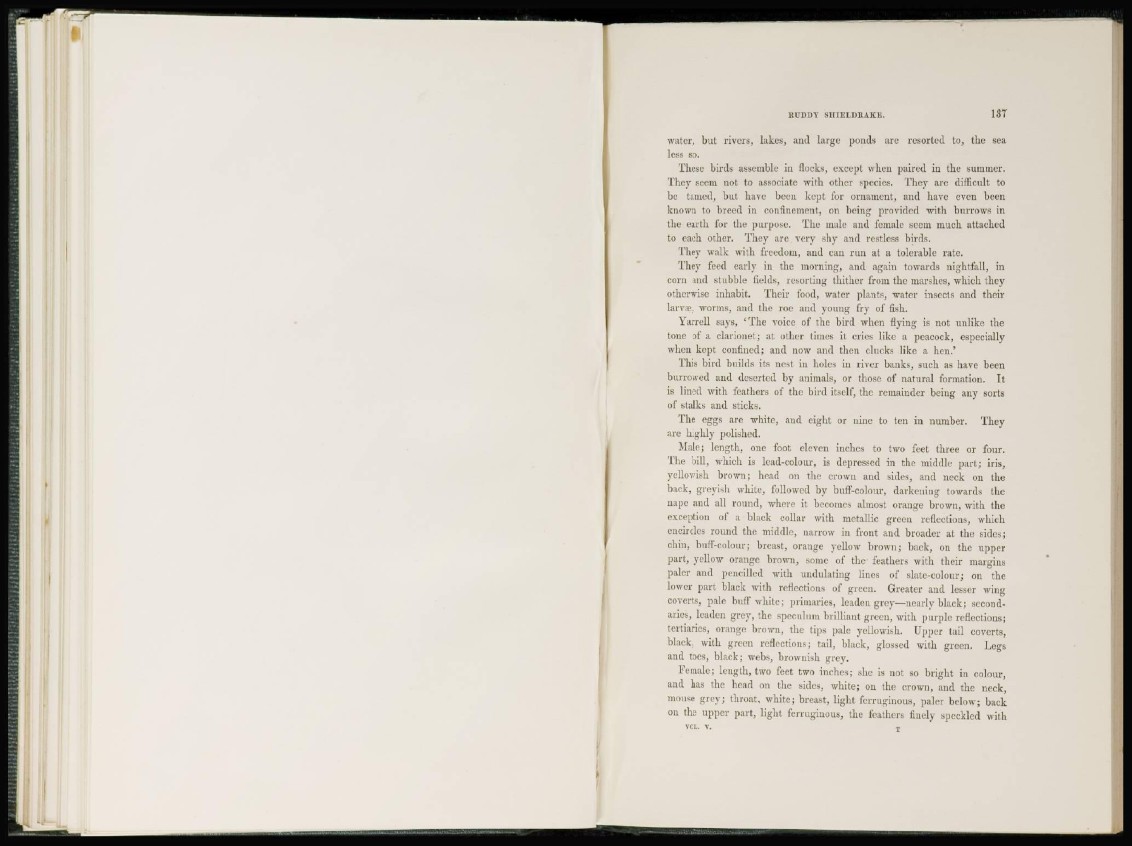
R U D D Y S I I I E L D R A K E. 187
water, but rivers, lakes, and large ponds are resorted to, the sea
less so.
These birds assemble in flocks, except when paired in the summer.
Thev seem not to associate with other species. They are difficult to
be tamed, but have been kept for ornament, and have even been
known to breed in confinement, on being provided with burrows in
the earth for the purpose. The male and female seem much attached
to each other. They are very shy and restless birds.
They walk with freedom, and can run at a tolerable rate.
They feed early in the morning, and again towards nightfall, in
corn and stubble fields, resorting thither from the marshes, which they
otherwise inhabit. Their food, water plants, water insects and their
larva?, worms, and the roe and young fry of fish.
Yarrell says, ' T h e voice of the bird when flying is not unlike the
tone of a clarionet; at other times it cries like a peacock, especially
when kept confined; and now and then clucks like a hen.'
This bird builds its nest in holes in river banks, such as have been
burrowed and deserted by animals, or those of natural formation. It
is lined with feathers of the bird itself, the remainder being any sorts
of stalks and sticks.
The eggs are white, and eight or nine to ten in number. They
are highly polished.
Male; length, one foot eleven inches to two feet three or four.
The hill, which is lead-colour, is depressed in the middle part; iris,
yellowish brown; head on the crown and sides, and neck on the
back, greyish white, followed by buff-colour, darkening towards the
nape and all round, where it becomes almost orange brown, with the
exception of a black collar with metallic green reflections, which
encircles round the middle, narrow in front and broader at the sides;
chin, buff-colour; breast, orange yellow brown; back, on the upper
part, yellow orange brown, some of the feathers with their margins
paler and pencilled with undulating lines of slate-colour; on the
lower part black with reflections of green. Greater and lesser wing
coverts, pale buff white; primaries, leaden grey—nearly black; secondaries,
leaden grey, the speculum brilliant green, with purple reflections;
tertiaries, orange brown, the tips pale yellowish. Upper tail coverts,
black, with green reflections; tail, black, glossed with green. Legs
and toes, black; webs, brownish grey.
Female; length, two feet two inches; she is not so bright in colour,
and has the head on the sides, white; on the crown, and the neck,
mouse grey; throat, white; breast, light ferruginous, paler below; back
on the upper part, light ferruginous, the feathers finely speckled with
VOL. V. T